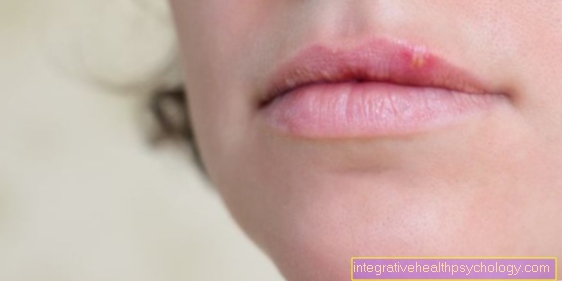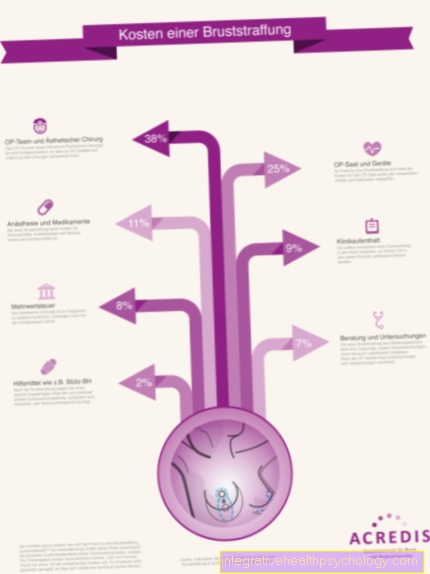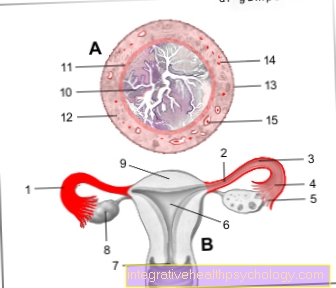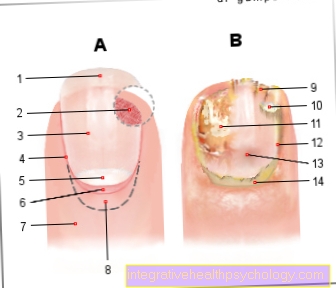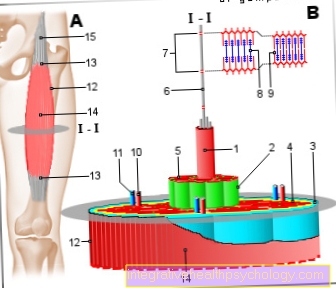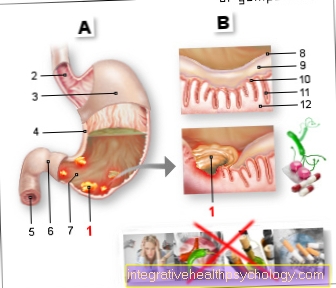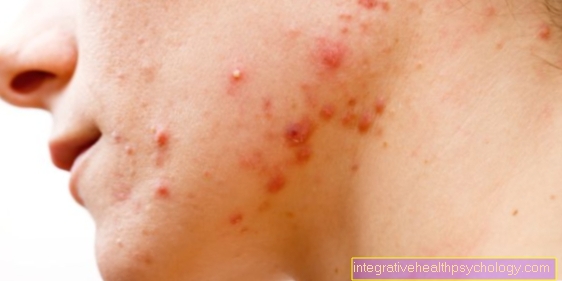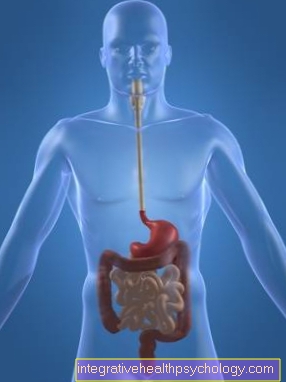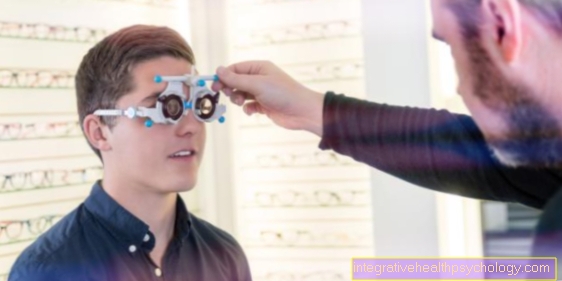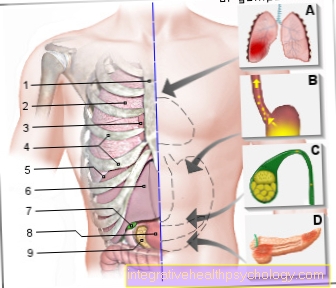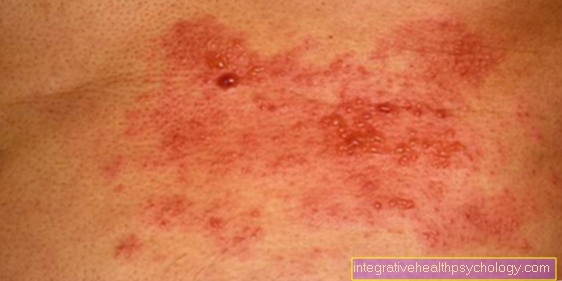Treatment options for breast cancer
Synonyms in a broader sense
Breast cancer, breast cancer, invasive ductal breast cancer, invasive lobular breast cancer, inflammatory breast cancer,
English: breast cancer
definition
Breast cancer (breast cancer) is a malignant growth (malignant tumor) of the female or male breast.
The cancer can originate either from the ducts of the glands (milk ducts = ductal carcinoma) or from the tissue of the glandular lobules (lobular carcinoma).

Possible therapeutic approaches
The therapy for breast cancer depends on the size of the tumor, its location (location) and its type (see types of breast cancer). It is also important whether the cancer cells have already settled (metastasized) in other organs.
Basically come:
- the operative therapy
- chemotherapy (see chemotherapy for breast cancer)
- radiation therapy (see also breast cancer radiation / radiation therapy)
- the hormone therapy
- Immunotherapy / Antibody Therapy
for use.
Operative therapy
Basically, one tries, as far as possible, to operate breast-conserving surgery (BET = breast-conserving therapy). The tumor is removed on all sides with a safety margin (preferably 1 cm). To determine the exact stage of the tumor, the lymph nodes in the armpit on the same side are also removed.
If there is only one tumor nodule, it is now possible to use special diagnostic procedures to identify the first lymph node in the lymphatic drainage area. This is known as the sentinel node and can be specifically removed. Current study results show that with a metastasis-free sentinel lymph node, the removal of further lymph nodes can be dispensed with. This can significantly reduce the rate of operation-related side effects, in particular a build-up of lymph fluid (lymphedema) in the affected arm. However, if the sentinel lymph node is infected with tumor cells, the other lymph nodes in the armpit (at least 10 are required here) are removed. The removal of the lymph nodes is important on the one hand for therapy and on the other hand for predicting the course of the disease after the operation.
You will find more information on this topic here: Lymph node involvement in breast cancer
After a breast-conserving operation, the breast is always irradiated. Compared with an ablation of the entire breast (Mastectomy) the same overall survival rates exist after breast-conserving therapy with subsequent radiation.
Exclusion criteria (contraindications) for breast-conserving therapy are:
- Multiple tumor foci in the breast
- Complete removal does not succeed even after several attempts
- Inflammatory (inflammatory) breast cancer
- Residual breast irradiation is not possible
If breast-conserving therapy is not possible, the entire breast including the affected lymph nodes should be removed (mastectomy). There are three different methods. After the breast removal
- Rotter / Halsted (radical (classic) mastectomy) is removed from the breast muscle (M. pectoralis) in addition to the mammary gland body and the fatty tissue.
- With the Patey method (modified radical mastectomy), however, the pectoral muscle is left in place.
- The third method of breast removal (subcutaneous mastectomy) only involves the removal of the mammary gland and the fatty tissue, but leaves the pectoral muscle below the breast and, above all, the skin above the gland.
Surgery only makes sense if complete removal of the tumor can be achieved. If it can be foreseen in advance that this will not work, other therapeutic methods (chemotherapy, radiation therapy) should precede the operation.
All information is of a general nature, the decision on the individual form of therapy can only be made by the treating specialist in gynecology, as only he knows all the necessary facts about the most promising form of therapy.
Restoration / reconstruction of the breast
After the breast has been ablated, it can be restored in another surgical procedure. There are several methods of restoring (reconstructing) the breast.
On the one hand, one can use the body's own (autologous) material, on the other hand foreign (heterologous) material.
- The body's own materials would be muscles, for example.
- Foreign materials would be expander or silicone prostheses.
If the nipple has been removed, there are also several methods available to rebuild it. For example, one would be the tattoo.
Read more about this on our website: Breast reconstruction.
Radiation / radiation therapy
Irradiation (radiation therapy) is carried out with high-energy X-rays (photon radiation) and / or electron beams (particle radiation). The standard in radiation therapy here is irradiation of the entire breast for a period of around five weeks (25 to 28 irradiations on five days per week). Depending on the risk situation, irradiation of the tumor region is also necessary for another five to ten days of treatment.
After breast-conserving therapy, radiation is always given. This reduces the likelihood of the breast cancer recurring in the same location (local recurrence) and increases the overall survival rate.
If several armpit lymph nodes are involved or if the tumor cells cross the lymph node capsule, the lymphatic drainage pathways must also be irradiated.
Patients in whom the tumor has progressed so far that they can no longer be operated on (primarily inoperable patients) are also irradiated. This achieves a reduction in the size of the tumor and an alleviation of the symptoms (palliative radiation).
Read more about the topic here: Irradiation for breast cancer
chemotherapy
Chemotherapy can be used both before and after operative therapy (neoadjuvant or adjuvant therapy). Depending on the patient's situation, several chemotherapeutic agents are used in a certain combination (polychemotherapy).
Standard schemes are:
- CMF regimen (cyclophosphamide + methotrexate + 5-fluorouracil every four weeks with 6 cycles)
- EC scheme (epirubicin + cyclophosphamide every three weeks of 4 cycles)
- AC scheme (adriamycin + cyclophosphamide every three weeks of 4 cycles).
Newer schemes include taxanes. These inhibit cell division and appear to be a bit more effective, but also have more side effects
The therapy schemes can become outdated for a short time, so that the information given is no longer up-to-date.
Hormone therapy
Some malignant breast tumors have hormone receptors and respond to hormonal stimuli. This means that the cancer cells react to sex hormones (oestrogens, gestagens) and are stimulated (stimulated) by them to grow. In women before the menopause, this is 50-60% of all breast cancers, in women after the menopause 70-80%. This fact can be used therapeutically by removing these sex hormones from the body and thus also from the cancer cells.
This used to be done by surgical removal of the ovaries (Oophorectomy), the place where the hormones are formed, or where they are irradiated (ablative hormone therapy).
These procedures have now been replaced by drugs that intervene in the control cycle of hormone formation or effect.
This includes different drug groups:
- Antiestrogens (e.g. Tamoxifen or Faslodex): Occupy the estrogen receptors on the tumor cells and thereby prevent the hormone from working
- GnRH analogues (e.g. Zoladex): indirectly lead to a decrease in estrogen formation
- Aromatase inhibitors (e.g. Aromasin or Arimidex): Inhibit enzymes that are involved in the formation of estrogen and thus directly prevent the formation of estrogen.
Such hormone therapy is usually carried out for about five years after the tumor has been removed and radiation.
Read more about the topic here: Hormone therapy for breast cancer
Tamoxifen
Tamoxifen belongs to the group of drugs called selective estrogen receptor modulators, i.e. anti-hormone therapy for breast cancer. This means that tamoxifen binds to the estrogen receptors in the body and has either a stimulating or an inhibiting effect. Its effectiveness in breast cancer is that tamoxifen has an inhibitory effect on the estrogen receptors on the breast, including breast cancer, so that the growth of breast cancer can no longer be stimulated by estrogens. It is important that tamoxifen has a stimulating effect on the uterine lining and thus, if taken, the risk of a tumor of the inner lining of the uterus (Endometrial cancer) increases.
Tamoxifen side effects include hot flashes, nausea, and a higher risk of thrombosis. Tamoxifen should be used for a total of 5 years.
Aromasin
Aromasin is a so-called aromatase inhibitor and is used in anti-hormone therapy for breast cancer in postmenopausal women. It inhibits the formation of estrogen, which can no longer have a stimulating effect on the breast or on any remaining breast cancer cells. It is given for 5 years after the operation.
Possible side effects include hot flashes, nausea, headache, insomnia, or depression.
Immunotherapy / Antibody Therapy
In 25-30% of all malignant breast tumors, a certain growth factor (c-erb2) and a growth factor receptor (HER-2 = human epidermal growth factor - receptor 2), which stimulate the cancer cells to grow faster, are increased. As a result, the cancer cells constantly receive signals from the growth factors that have formed that they should divide and multiply. The tumor grows (proliferates) faster than under a normal amount of growth factors.
Immunotherapy uses an antibody (trastuzumab, Herzeptin®) that is directed against these growth factors and receptors. The result of this is that the growth factor and receptor are no longer formed as strongly, the cancer cells no longer receive growth signals as often, grow more slowly and die. The formation of new vessels (Angiogenesis) inhibited in the tumor cell cluster.
Immunotherapy is used in combination with chemotherapy in patients who produce these growth factors and receptors.
What criteria are used to determine which therapy is used for treatment?
Which therapeutic measures are taken for breast cancer depends on which specific receptors are present in the tumor and how quickly it grows.
First of all, it should be said that surgery is indicated in almost all cases and only drug therapy depends on certain factors. To determine this, a biopsy (tissue sample) is taken as part of the diagnostic work-up of breast cancer. On the one hand, the diagnosis can be confirmed and, on the other hand, it is immediately determined whether the tumor has receptors for the hormone estrogen (hormone receptor positive) and whether it has receptors for the growth factor HER2 (so-called HER2 positive tumors).
If the breast cancer hormone receptor is positive, a multi-year anti-hormone therapy is initiated after the operation. The best-known preparations for this are tamoxifen, GnRH analogues and aromatase inhibitors (Aromasin). Which of these drugs is used depends on whether the patient is already through menopause or not.
If the tumor also shows receptors for the growth factor HER2, antibody therapy with trastuzumab is given before and after the operation. The antibody binds specifically to the tumor cells and marks them for the immune system. The tumor is recognized and fought by the immune system.
Whether chemotherapy is carried out as the last pillar of therapy depends on the rate at which the breast cancer grows and how similar it is to normal mammary gland tissue. In general, one can say that chemotherapy is carried out for the majority of breast cancers. The exception is hormone receptor positive and HER2 negative breast cancer, which also has only a slow growth rate and is still very similar to normal tissue. No chemotherapy is performed here as it has no benefit for the patient.
What is the treatment for a triple negative breast cancer?
Antibody or anti-hormone therapy is not effective in triple negative breast cancer because the tumor has no special receptors for these therapies. Therefore, in addition to the surgical removal of the tumor, only chemotherapy remains. The trend is that chemotherapy is given before the operation. The advantage here is that the chemotherapy shrinks the tumor, which makes the subsequent operation easier or, in some cases, even enables it. In addition, it can be tested which chemotherapeutic agents work well against the tumor and if chemotherapy also takes place after the operation, experience has already been gained as to which chemotherapeutic agent is effective or poorly effective for the individual patient.
The standard chemotherapy for triple negative breast cancer are the drugs 5-fluorouracil, doxorubicin and cyclophosphamide. All of them are chemotherapy drugs that attack the tumor in different ways. The combination of active ingredients can be changed depending on the previous illnesses and constitution of the patient. For example, doxorubicin would not be recommended in a patient with heart damage because it is toxic to the heart.
How long does the therapy last?
How long the entire therapy lasts depends on which therapeutic options are used.
Almost every breast cancer is operated on today, and in the most common cases with breast-conserving surgery. After this operation, the remaining breast tissue must be irradiated. In the case of irradiation, the entire dose is not applied at once, but rather divided into several sessions over a few weeks.
Chemotherapy can be given before the operation or after it. The various chemotherapy regimens, including the breaks in between, last between 18 and 24 weeks.
In patients whose breast cancer has a receptor for a certain growth factor (HER2), they receive targeted antibody therapy for 12 months in addition to chemotherapy. This should be started no later than four months after the end of chemotherapy.
The last major pillar of the therapeutic options is anti-hormone therapy. This is used in patients whose tumors have, among other things, a positive receptor for estrogens and counteracts tumor growth. This therapy should last for at least five years; if the side effects are acceptable, it can even be used for 10 years.
What are the typical side effects of breast cancer therapy?
There are three pillars in the drug therapy of breast cancer: chemotherapy, antibody therapy and anti-hormone therapy.
Each therapy group has its specific side effects.
- Chemotherapy works by killing cells that divide rapidly. In addition to the tumor cells, there are also the body's own cells that divide quickly and the side effects can be derived from this. The gastric and intestinal mucosa are attacked, which can lead to infections and diarrhea. In addition, the bone marrow is suppressed by the chemotherapy, so that bleeding, infections and fatigue can occur due to a lack of the red blood pigment. In addition, hair loss, vomiting and disorders of the sexual organs are side effects of chemotherapy. Specific side effects of frequently used chemotherapeutic agents for breast cancer are damage to the heart and bloody urinary tract infections, as well as an increased risk of developing bladder carcinoma with the active ingredient cyclophosphamide.
- Antibody therapy with trastuzumab (antibody drug) can also cause damage to the heart and must therefore not be given together with chemotherapy drugs that can also damage the heart.
- The drug Tamoxifen is often used in anti-hormone therapy.It can induce hot flashes and vomiting and increases the risk of thrombosis (see tamoxifen).
Another drug is the so-called GnRH analogue, which lowers the level of estrogen by stimulating the pituitary gland. Side effects here are menopausal symptoms such as hot flashes and constipation.
The third group of drugs in anti-hormone therapy are aromatase inhibitors, which can be associated with nausea, vomiting and osteoporosis.
How useful are alternative treatment methods?
A large number of alternative treatment methods for the therapy of breast cancer are offered on a wide variety of platforms as well as at alternative practitioners and alternative medicine centers. It can be said quite clearly here that a sole alternative treatment method in the therapy of breast cancer does not make sense. Under certain circumstances, an additional alternative treatment method can be initiated parallel to the classic therapy regimen of conventional medicine, but this should always be discussed with the treating physician in advance.
It is also important to know that the effectiveness of alternative treatment methods on breast cancer itself has not yet been scientifically proven, while the "classic" treatment can meanwhile show very good cure rates.
Alternative procedures are often used to reduce or improve the side effects of surgical or drug therapy for breast cancer.
Psychological care
Breast cancer can be stressful for the patient and his relatives from the time of diagnosis to the time after the therapy has been completed. Therefore, psychological support is usually also offered in the special breast cancer centers. The following principle applies: everything can but does not have to be.
The offers of psychological care are very diverse. For example, there are many self-help groups where those affected can talk to each other about problems and fears. In addition, various institutions offer coping strategies specifically for cancer. These include, for example, relaxation therapies or offers that express fears and worries through creativity.
Of course, there is also the option of psycho-oncological care, i.e. care that specifically deals with cancer. This is carried out by specialized professionals who have experience with breast cancer and the psychological stress associated with it.
Finally, it should be said that in some cases temporary drug therapy can be useful to support psychological care.
What can the relatives do?
Breast cancer often not only affects the patient himself, but also affects the immediate environment. Often it is difficult for the relatives to speak openly with the person concerned about the cancer, even though they would like to help.
From psycho-oncology, the experts recommend that relatives should ask the patient how they can best help him in the current situation. This in no way indicates ignorance or weakness. Furthermore, it is of essential importance for the patient and his relatives to talk to one another about fears, worries or problems. On the one hand, this promotes processing and, on the other hand, it can show sympathy for the person concerned.
Another possibility that relatives can provide support is to look for information. Breast cancer is a diverse disease and there is a lot of information to be found in the media. When researching the various therapy options, for example, help can often be very welcome. It is only important that you do not impose your own opinion on the person concerned, as the individual decision for all therapy steps, after consulting a specialized doctor, should always lie with the patient himself.

